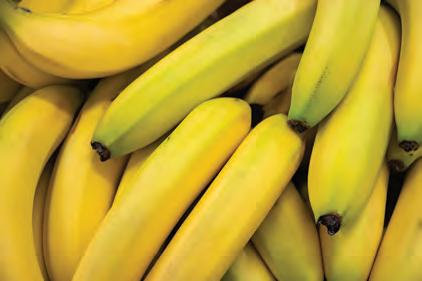
6 minute read
2.5 The law of supply and movements along the supply curve
Resourceseses
Weblinks The market economy What is a market economy?
Advertisement
2.3 Activities
Students, these questions are even better in jacPLUS
Receive immediate feedback and access sample responses Access additional questions Track your results and progress Find all this and MORE in jacPLUS 2.3 Exercise 2.3 Quick quiz
2.3 Exercise 1. Describe the key features of Australia’s contemporary market economy. (2 marks) 2. Classify which of the three basic economic questions each of the following decisions best represents: (5 marks)
Decision
To which of the three basic economic questions does this decision mostly relate? Briefly justify. a. How should a hospital produce its health services? b. Should a farmer produce wheat or lamb? c. How much should a well-known tennis player be paid? d. Should a mining company produce iron ore or coal? e. Should the government pay a subsidy or cash bonus to Tasmanian companies? 3. There are not enough resources to produce everything we want, so society has to choose which wants will be satisfied. In Australia, this is generally done using markets and the price system. For instance, when the relative price of a product moves up or down due to changes in demand relative to supply, this signals to producers or owners of resources, how resources should be used or allocated. a. Assume you use resources to produce strawberries and the market price fell relative to that for raspberries. In general terms, explain what this tells you about the type of product consumers want produced. (2 marks) b. If the price of strawberries went up against raspberries, in general terms explain what type of product the market is telling you to produce. (2 marks) c. By responding to these price signals outline the likely effect on allocative efficiency and the satisfaction of people’s wants. (1 mark) UNCORRECTED PAGE PROOFS
Fully worked solutions and sample responses are available in your digital formats.
KEY KNOWLEDGE
• the law of demand and the demand curve • the distinction between a movement along the demand curve and a shift of the demand curve Source: VCE Economics Study Design (2023–2027) extracts © VCAA; reproduced by permission. Buyers or consumers are a really important group or economic agent in any market. Demand in a market occurs when consumers or buyers use their income to purchase a particular quantity of a good or service. They demand or want to purchase various goods and services. This group might include consumers like you or me, businesses or even governments. Perhaps the most important thing to note is that buyers in a market are more willing to purchase a good or service at a lower price rather than at a higher price. The price of a product is an important factor affecting how much of a product consumers are prepared to buy. This observation is expressed in the law of demand. 2.4.1 The law of demand — how changes in price cause a movement along the demand curve The law of demand simply states that the quantity of a particular good or service that buyers are prepared to purchase varies inversely (in the opposite direction) with the change in price, assuming other factors do not change. Hence: • As the price increases, there is a contraction in the quantity demanded, causing a movement upwards along the demand line. • As the price decreases, there is an expansion in the quantity demanded, causing a movement downwards along the demand line. It is hardly surprising that consumers or buyers behave like this, causing the quantity demanded to contract or expand along the demand curve with a rise or fall in price. This is called a movement along the demand line. For example, demand contracts as the price rises because the good or service becomes less affordable for most of us and thus fewer people have the necessary money or desire to spend in this way. By contrast, as the price decreases, demand expands because it is more affordable and tempting for more people. So what would a demand curve (representing how consumers respond to price) look like if plotted on a graph or diagram where price is located on the vertical axis and quantity on the horizontal axis? Imagine there was a competitive market for bananas. Using hypothetical data from the table, figure 2.10 graphically illustrates the relationship that exists between the quantity of bananas demanded and the price. For now, we will assume that the change in the price is the only factor affecting the quantity demanded. In other UNCORRECTED PAGE PROOFS words, all non-price influences affecting demand remain constant.
FIGURE 2.10 The demand line showing the law of demand for bananas where the quantity demanded varies inversely with price
Price per kg of bananas D1 = Original quantity of bananas demanded each year (’000 kg) 5 The demand line for bananas
$1 5 Price per kg ($) 1 3 4 Expansion (from A to B as price decreases) 0 1 2 3 Quantity of bananas demanded each year (’000 kg)
A Contraction (from B to A as price increases) $2 4
B $3 3 $4 2 D1
$5 1 4 5 6
Notice that when we plot the quantity demanded at each possible price on a graph (see figure 2.10), the resulting demand line for bananas slopes down and to the right. Here it is worth remembering that, for simplicity, this basic demand line has been drawn straight rather than curved in shape, as might appear in reality. Either way, the line has a negative slope and visually illustrates the law of demand: • A move downward along the demand line (or curve) from point A to point B is called an expansion in demand. This movement is only caused by a fall in price. In our example, demand expands from 2000 kg per year at the price of $4 per kg (point A) to 4000 kg at the lower price of $2 per kg (point B). • In reverse, a move upwards along the demand line (or curve) from point B to point A is called a contraction in demand and is only caused by a rise in price. In our example, demand contracts from 4000 kg per year at a price of $2 per kg (point B) to only 2000 kg per year at the higher price of $4 per kg (point A). It is really important to understand that these movements along the demand line (called an expansion or contraction in the quantity demanded) are caused solely by a change in price. As mentioned previously, we have assumed that all non-price factors have remained constant. We will look at these other factors shortly. For simplicity, the demand line for bananas has been drawn as a straight line, even though in the real world it would usually be a concave curve (called a demand curve). While our example here has been the demand for bananas, the same sort of buyer behaviour could be expected for any other good (such as grapes, hot dogs, soft drinks, mobiles, wheat or iron ore) or service (such as financial, medical, ski instruction, gardening or entertainment) in a fairly competitive market.
Resourceseses

2 UNCORRECTED PAGE PROOFS

Resources
Video eLesson Movement along vs. a shift in the demand curve (eles-3504)
Interactivity Movement along vs. a shift in the demand curve (int-7879)










